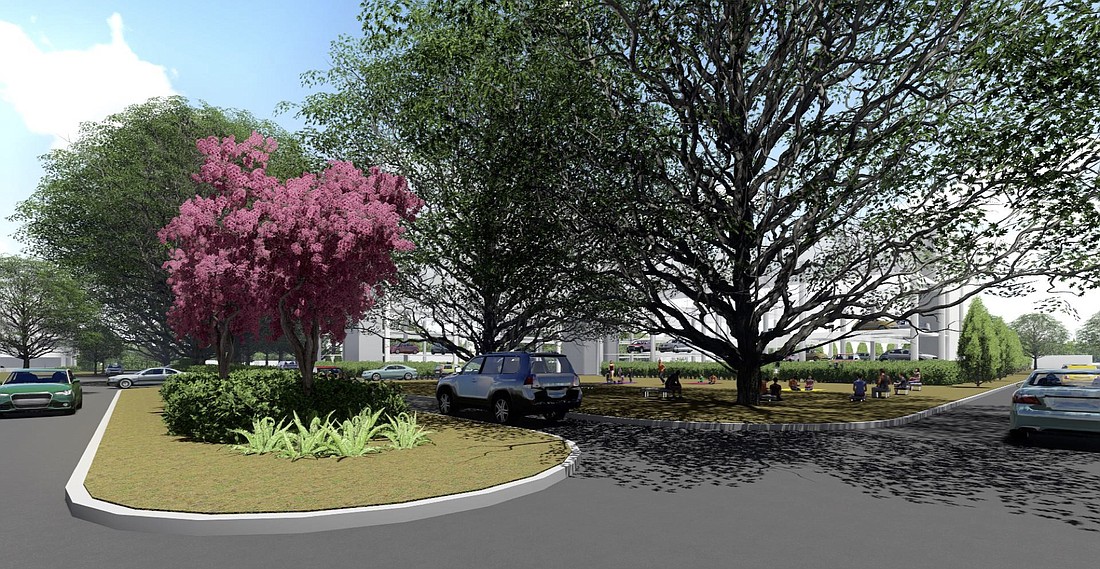- November 5, 2025
-
-
Loading

On Feb. 22, the team behind the planned redevelopment of the Bath and Racquet Club held its third workshop in as many months with neighboring residents, hoping to provide some comfort about what has been a controversial proposal.
According to the residents who have voiced opposition to the redevelopment plans, though, there is little comfort regarding the scope of the project.
“We have the same concerns about the height, the density, the traffic, the noncompatibility of buildings,” said resident Ben Cannon. “They just keep bulldozing along, regardless.”
In November, the Bath and Racquet Club submitted preliminary plans to the city for a residential addition to the property, located at 2170 Robinhood St. The scope of the project has since been modified, but the latest plans envision between 150 and 180 residential units in buildings ranging from three to seven stories tall.
At previous workshops, residents in the surrounding neighborhoods — consisting largely of single-family homes — objected to the proposal as out of character with the area. In addition to concerns about the proposed height, residents feared adding more residential units would exacerbate traffic issues in an already-congested segment of the city near Bee Ridge Road and U.S. 41.
Shawn Dressler, a planning consultant with Kimley-Horn working on the redevelopment plans, has attempted to downplay the effect the project would have on its surroundings. Dressler has said the proposal will include details on landscaping, walls and other buffering tools designed to mask the structures from the neighbors’ perspectives.
Dressler saw the Feb. 22 workshop as a productive discussion of more details regarding the proposed redevelopment. Residents asked for specifics on landscaping plans and traffic management, which he thought provided a platform to better share the property owners’ vision.
Dressler was also able to provide more details about plans to incorporate affordable housing into the project. The property owners propose providing 10% of the rental units for residents making up to 80% of the area median income, and an additional 5% of the units for people making up to 100% of the area median income.
For a 900-square-foot, one-bedroom unit, that might translate to a rental rate of just less than $1,500 a month, Dressler said. A similar market rate unit would likely lease for $1,800 a month, although the market conditions are still variable.
That’s also why the developer has not settled on a firm number of units to incorporate into the project.
“Part of that honestly comes down to: What does the market dictate when we start selling those units?” Dressler said. “If smaller units are selling better, we’ll probably sell more, smaller units. Otherwise, we’ll probably sell fewer, bigger units.”
In response to traffic concerns, the project team is willing to add traffic calming measures onto Olentary Street, which residents say is commonly used as a cut-through route. Dressler said the team also wants to connect School Avenue to the project site to allow traffic to better disperse throughout the area, instead of steering it all to U.S. 41 and risking more cut-through traffic on smaller streets.
“We are definitely dedicated to making that connection if the city leadership is in favor of it,” Dressler said.
But this, too, is a source of concern, Cannon said. Some people said providing a connection to School Avenue would steer more cars into the residential neighborhood. Cannon saw the proposal as an attempt to divert attention from the issues at U.S. 41 and Bee Ridge Road.
“Everyone knows there’s a traffic problem at that intersection,” Cannon said. “It’s very congested and difficult. They’re more than willing to cause problems in our neighborhood to overcome it.”
Dressler said he hopes to submit a final site plan to the city for consideration in March. He said it would include provisions designed to minimize the effects of the project on the neighborhood. Residents such as Cannon are skeptical, organizing to oppose the proposal as it goes through the city’s development review process.
Although Dressler tried to focus on the positives of the Feb. 20 workshop, Cannon said it did not effectively address any of the major concerns residents have.
“It really drove home the fact this development is not concerned with what the residents and citizens of Sarasota want,” Cannon said. “They don’t care.”